Geology Without Borders
Trieste, 14-16 settembre 2021
Field Trips
Pre Congress field trips
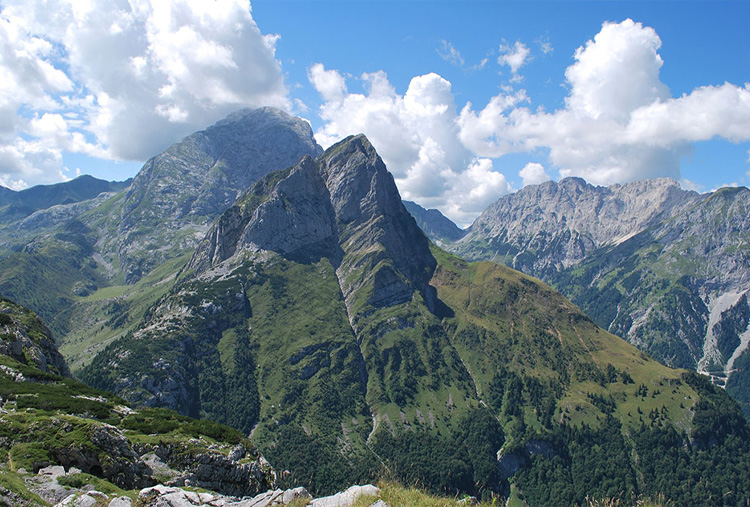
FT1. The Pre-Variscan Sequence of the Carnic Alps
Field leader(s): Carlo Corradini (University of Trieste), Monica Pondrelli (IRSPS, Università D'Annunzio)
Contact: ccorradini@units.it
Date: 06-08 September 2021
Duration: 3 days
Costs (all included): € 300
The Pre-Variscan Sequence of the Carnic Alps exposes Middle Ordovician to lower Pennsylvanian rocks that, although affected by both Variscan and Alpine orogenies, preserve continuous and non-metamorphosed sequences. Depositional settings vary from shallow water to open marine environment. Remarkable is the presence of the largest Devonian reefs of Europe, and related deposits from back reef to fore-reef and basin. The field trip will focus on various aspects of stratigraphy, palaeontology and tectonics of the sequence.
Localities at the Italian-Austrian border will be reached hiking on mountain paths. Mt Cellon, Mt Freikofel, and Mt Zermula are the main areas that will be visited. However, the programme may change according to footpath and/or weather conditions.
The field trip will start and end in Trieste.
Several hours of hiking on mountain paths are scheduled for the first two days of the field trip. Participants shall be at good health and well prepared for (long) hiking in alpine field.
Number of participants: minimum 5, maximum 20
Cancelled filed trips:
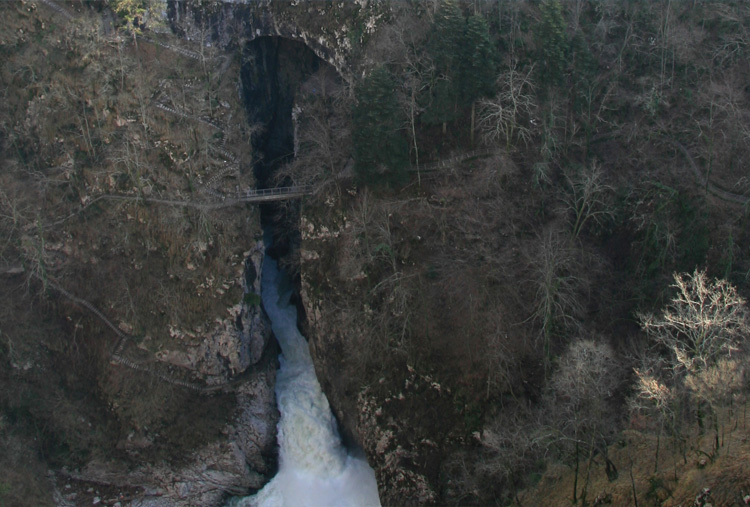
FT2. Along the hidden Timavo
Field leader(s): Luca Zini (University of Trieste), Chiara Calligaris (University of Trieste)
Contact: zini@units.it
Date: 10 September 2021
Duration: 1 day
Costs (all included): € 70
The excursion mainly follows the path of the Reka/Timavo system, from the Reka sinking point at Skocjan's sinkhole (Slovenia) to the Timavo springs at San Giovanni di Duino (Italy).
Starting from Trieste we will reach by bus the Slovenian Skocjan Cave Park (Skocjanske jame Park) sinkhole of the upper Timavo (reka Reka), area declared a world natural heritage by UNESCO since 1976 which is one of the most striking examples of the action of karst with its collapse sinkholes, the gigantic underground gorge, the collapse and filling deposits, the evidence of recent tectonic movements and allows to touch the complexity and magnitude of the karst phenomenon. The tour is approximately 4,5 km long and lasts about three hours.
Lunch on site. From Skocjan caves, by bus, in 45 minutes, we will reach the Giant cave site (Grotta Gigante) on the Italian side of the classical karst region. The main cavern is 107 m high, 65 m wide and 130 m long, and is known as the world's largest show cave and is part of the Guinness Book of Record since 1995. The tour lasts about 1 hour.
The field trip will continue at Timavo springs in San Giovanni di Duino. Here three important outflows of the Reka\Timavo aquifer system can be identified.
Tour length: about 9 hours, by bus and on foot. The easy paths of the excursion are for all.
Number of participants: minimum 20, maximum 50
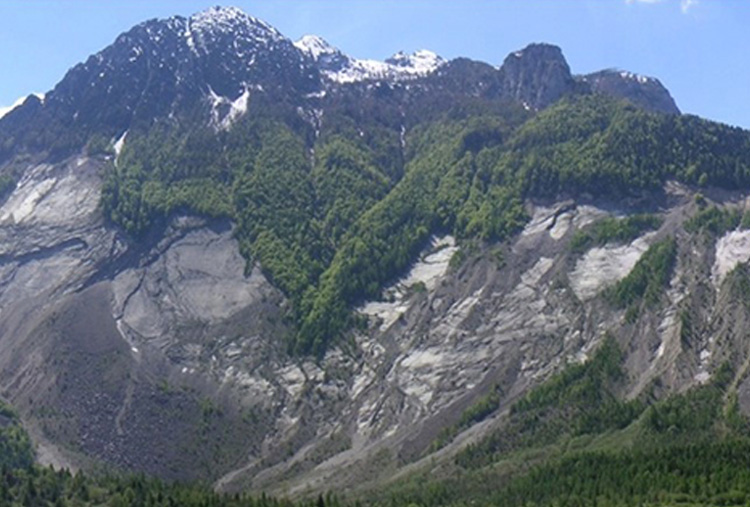
FT3. The Vajont rockslide: travelling across geological complexity
Field leader(s): Monica Ghirotti (University of Ferrara), Roberto Francese (University of Parma), Massimo Giorgi (OGS), Aldino Bondesan (University of Padova)
Contact: mgiorgi@inogs.it
Date: 06 September 2021
Duration: 1 day
Costs (all included): € 70
The Vajont rockslide is a complex event covering a time span of almost 60 years. The slide volume and the tragic ending attracted many scientists in a long-lasting challenge to explain the predisposing factors, to establish the triggering mechanisms and to simulate the sliding and the associated water wave overtopping the dam. The 50-year anniversary was a new booster for geoscientists and several tens of new papers have been published in the last decade although a comprehensive geological explanation is partly lacking and some key features are probably still hidden in the background. The first stop in the Piave Valley is devoted to explain local and regional structure and stratigraphy as resulted from the combination of palaeo-depositional environments and multiphase Alpine tectonic. The subsequent stop, is a visit, guided by ENEL qualified personnel, of the dam plants excavated right into the Jurassic rocks of the Vajont gorge. It is an excellent opportunity for a direct observation of the valley stratigraphy from the base formations to the glided succession and more over to understand past and modern technology involved in hydropower. The last stop includes a quick visit of the Vajont Museum in Erto and a final field lecture, right on the top of the landslide, with an up-to-date description of the events and their correlation with the geological complexity of this peculiar site.
Number of participants: minimum 20, maximum 30
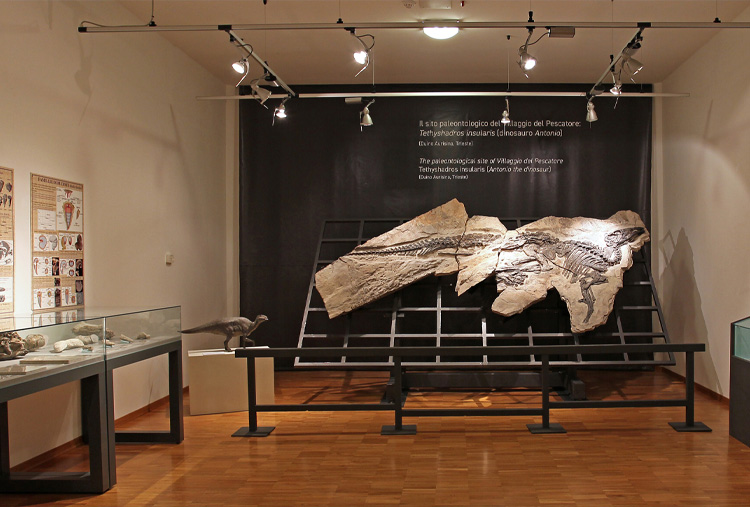
FT4. The Mesozoic paleoenvironmental richness of the Trieste Karst
Field leader(s): Lorenzo Consorti (ISPRA - Geological Survey of Italy), Lorenzo Bonini (University of Trieste), Marco Franceschi (University of Trieste), Gianluca Frijia (University of Ferrara), Maurizio Ponton (University of Trieste)
Contact: lorenzo.consorti@isprambiente.it
Date: 11 September 2021
Duration: 1 day
Costs (all included): € 70
This field excursion aims to unravel some important localities of the Trieste Karst where the fossil richness is associated to some sharp carbonate facies contacts. We first plan a visit to the Trieste Natural History Museum (Museo civico di Storia Naturale) with emphasis on the invertebrate fauna of the Komen Limestone (Cenomanian laminites of the Karst region with ammonoids and fishes) and the vertebrate remains found at the Villaggio del Pescatore including "Antonio" and "Bruno": the two hadrosauroid (Tethyshadros insularis) with exquisite preservation. Then we will visit the paleontological site of "Villaggio del Pescatore". The site exposes some gorgeous mine cuts showing carbonate rhythmites and collapse platform breccias; large vertebrates remains like Tethyshdros have been found in these rhythmites. Visit to the active limestone quarry of "Cava Romana" site exposing the rudist-rich Aurisina formation mine cuts. The magnificent Cretaceous paleokarst system exposed at the abandoned Silvia quarry will be visited as well. An appointment to the peritidal Cenomanian carbonate succession cropping out at Moschenizza hill ends the day.
Number of participants: minimum 10, maximum 45
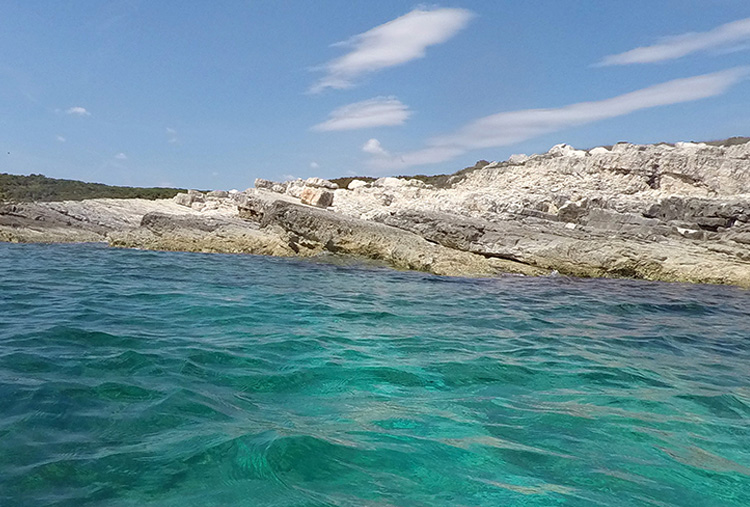
FT5. Quaternary Deposits in the Northeastern Adriatic Sea
Field leader(s): Stefano Furlani (University of Trieste), Alessandro Fontana (University of Padova), Giovanni Monegato (CNR-IGG), Tvrtko Korbar (Croatian Geological Survey), Mladen Juračić (University of Zagreb
Contact: sfurlani@units.it
Date: 12 September 2021
Duration: 1 day
Costs (all included): € 70
Istrian peninsula and the Gulf of Trieste represent the northernmost sector of the Mediterranean Sea. The fieldtrip will start in Trieste and will move by bus along the coastal sector of the Istrian peninsula, through Slovenia and Croatia. The first stop will be in the salt pans of Secovlje (Sicciole), in the Bay of Piran, that have been in use at least since Roman time. Here, the base of the Holocene lagoon sequence is at -26.5 m msl. The next stop will be the final tract of Mirna river valley, near Novigrad (Croatia), where we will discuss about the several hand augers and the 120-m long borehole collected in the area. Data collected allowed to describe in detail the Holocene transgression and the Pleistocene sea-level cycles. Along the coast of eastern Adriatic, Mirna River valley represents a reference example of the interaction between sea-level rise, sedimentary input and anthropic land-use during the last millennia. The next stop will be at Premantura, the southernmost headland of Istrian peninsula to visit the storm-wave boulder deposit recently studied by a team of Italian and Croatian researchers. The last stop will be in the Val Rosandra (Trieste), a fluviokarst valley to see the only continental Quaternary deposit exposed in the province of Trieste.
Number of participants: minimum 8, maximum 45
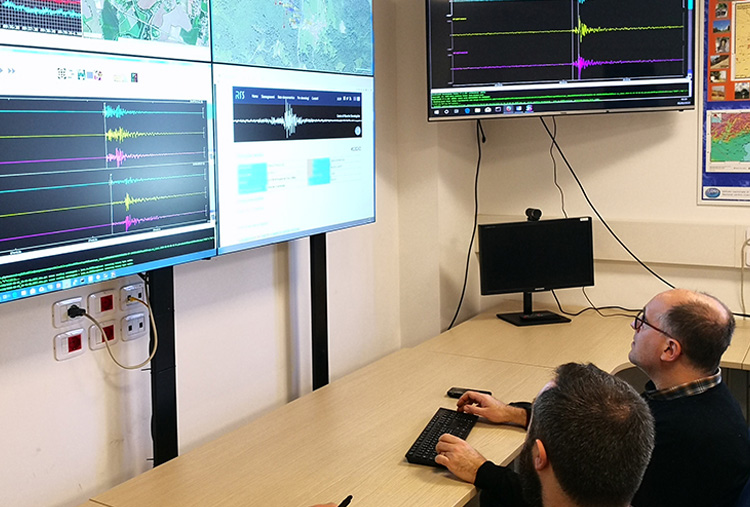
FT6. The 1976 Friuli Earthquake heritage
Field leader(s): Carla Barnaba (OGS-CRS)
Contact: cbarnaba@inogs.it
Date: 09 September 2021
Duration: 1 day
Costs (all included): € 70
This field trip plans to discover the OGS (Istituto Nazionale di Oceanografia e di Geofisica Sperimentale) seismological network and to visit Venzone, an ancient fortified town dating back to 1300, completely destroyed by the 1976 earthquakes, but rebuilt as it once was. Start at 9:00 a.m. in Porto Vecchio in Trieste for transport to Udine and will be returned to Trieste at 6:00 p.m.
OGS Seismological Centre (CRS) Laboratories will be visited in the morning. The Acquisition Room is the CRS core, where data come from remote seismological stations deployed in the mountains. All data are automatically processed to provide the event location and magnitude. Subsequently, data verified by the seismologist is communicated to Regional Civil Protection to manage the critical situation in progress or emergency. The day will continue to Venzone where the partecipants will visit the town, one of the most extraordinary examples of architectural and artistic restoration.
To whom it might concern, the permanent exhibition "Tiere Motus. History of an earthquake and of its people" can be explored. The exhibition aims at providing evidence and keeping alive in the collective memory the events related to the devastating earthquake that hit Friuli Venezia Giulia on 6th May 1976. A 3D simulation with a workshop-exhibition of the collapse of Venzone's Cathedral is also available. The visit concludes in Portis Vecchia, a ghost village north of Venzone. During the seismic sequence of 1976, the town was hit by rock falls, so that it was re-built in a safer place.
Number of participants: minimum 20, maximum 45